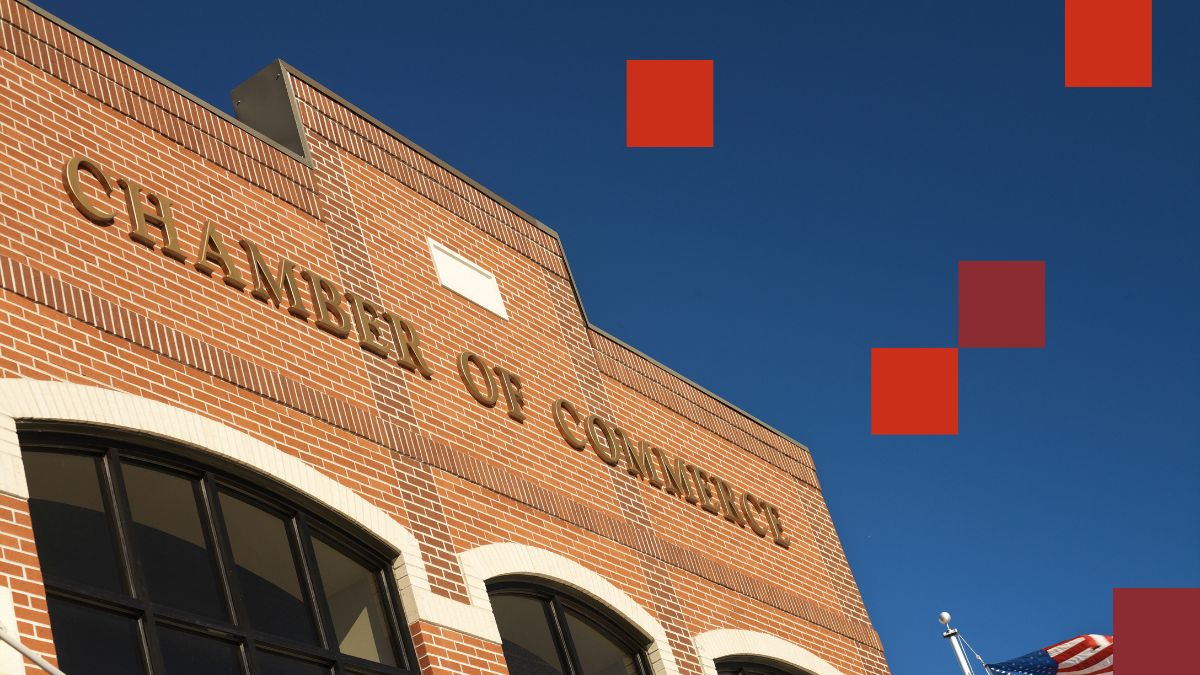What are Chambers of Commerce?
Chambers of commerce are organizations that support and represent local businesses, providing a platform for networking, advocacy, and community development. They serve as a collective voice for businesses and help foster economic growth by connecting companies to resources and each other.

Why Do Communities and Small Businesses Need Chambers?
Small businesses often face challenges such as limited access to resources, marketing opportunities, and business connections. Chambers play a vital role in bridging these gaps by offering networking opportunities, advocacy, and services designed to boost business success. For communities, chambers foster collaboration between local businesses, civic leaders, and residents, creating a thriving local economy.
Why Do Chambers of Commerce Benefit from Websites?
An online presence is crucial for any modern organization, and chambers of commerce are no exception. A website allows chambers to provide important services such as member directories, event registrations, and business promotion. It’s also a vital tool for enhancing visibility, engaging members, and offering valuable resources to the local business community.

10 Components to Creating the Best Chamber of Commerce Website
1. User Experience (UX) Design for Community Engagement
A well-designed user experience (UX) ensures that the Chamber’s website is easy to navigate, intuitive, and engaging for all users. In Indiana, tailoring the UX to meet the specific needs of the business community is key. From incorporating feedback from Indiana business owners to ensuring smooth navigation for diverse users, a strong UX design encourages more frequent use and engagement.
2. Mobile Responsiveness for On-the-Go Access
With more people using mobile devices to access information, it’s essential that Chamber websites offer seamless functionality on phones and tablets. In fact, studies show that a significant percentage of small business owners in Indiana rely on their mobile devices for business tasks. A mobile-friendly website improves member satisfaction by making resources accessible anytime, anywhere.
3. Membership Management Features for Indiana Chambers
A user-friendly platform for membership management streamlines the process of sign-ups, renewals, and benefits access. These features allow Chambers to enhance member experience by reducing administrative burdens and improving engagement with their services.
4. Event Calendar and Registration Tools
Chambers are hubs for local events and business gatherings, so having an easy-to-use calendar and registration system is crucial. Promoting Indiana Chamber events and allowing simple registration can increase local participation and community involvement, helping to highlight the Chamber’s value to businesses.
5. Networking Opportunities and Member Directories
A well-organized member directory enables local businesses to connect and collaborate more easily. Through interactive platforms, Chambers can highlight members, promote local partnerships, and share testimonials to show how networking leads to growth.
6. Marketing and Promotion Capabilities
A Chamber’s website is a powerful marketing tool. By promoting local businesses and events, the Chamber can help increase business visibility. Features such as email newsletters, digital marketing tools, and analytics to track engagement ensure that Chamber members get the most out of their online presence.
7. Security and Data Protection
Data security is paramount in today’s digital age. Ensuring robust security measures, such as encryption and regular updates, protects members’ sensitive information. Following data protection laws builds trust among Chamber members and the local business community.
8. SEO Best Practices and Strategies
Search engine optimization (SEO) is crucial for maximizing a Chamber’s visibility. By employing local SEO strategies, Chambers can ensure their site ranks higher in search results, helping businesses in Indiana and surrounding areas find their services more easily.
9. Testimonials and Success Stories
Showcasing the success stories of local businesses is a powerful way to demonstrate the value of the Chamber’s services. Featuring testimonials from satisfied members helps to build credibility and attract new businesses to join.
10. Accessibility and ADA Compliance
Ensuring that the Chamber’s website is accessible to everyone, including people with disabilities, is both a legal requirement and a best practice. ADA-compliant websites create an inclusive environment, allowing all members of the community to access important resources.
Why These Components Are So Important for Chambers and Small Businesses
Each of these components plays a vital role in making a Chamber of Commerce website an essential resource for businesses and communities. A well-designed, functional, and inclusive website enables Chambers to offer better services, foster community growth, and support small businesses more effectively.
Setting Your Chamber Up for Success
Creating the best Chamber of Commerce website requires attention to design, functionality, and the specific needs of the business community. If your Chamber is looking to improve its online presence, let ViviScape build you the best Chamber of Commerce website in Indiana.

